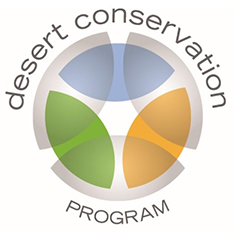
Explore Responsibly
Explore Responsibly
Hiking
General best practices for responsible hiking can be found through the national nonprofit organization Tread Lightly! They recommend:
- Travelling responsibly on designated roads, trails and areas.
- Staying on the trail even if it is rough and muddy.
- Walking on the track edge and cutting switchbacks increases damage, causing erosion and visual scarring.
- Buddying up with two or three hikers, reducing vulnerability if you have an accident.
- Keeping your pets under control; this protects your pet, other hikers and wildlife.
- Being considerate of others on the road or trail.
- Getting a map of your destination and determine which areas are open to hiking.
- Checking the weather. Don’t hike in extreme heat or cold. Dress in layers.
- Carrying water and emergency supplies, even on short hikes.
- Avoiding sensitive areas and habitats. Never handle a desert tortoise.
- Packing out what you pack in. And maybe a little more—bring a bag for any litter you see.
Biking
General rules of thumb for responsible mountain biking can be found through the national nonprofit organization Tread Lightly!. They recommend:
- Obtaining a map of your destination and determine which areas are open to mountain bikes.
- Making sure your bike is properly maintained and your body properly hydrated.
- Being considerate of others on the road or trail.
- Riding in the middle of the trails to minimize widening of the trails. Avoid side-slipping, which can lead to erosion.
- When descending, avoid locking your bike’s wheels, which gouges the trail.
- Slowing down when sight lines are poor.
- Complying with all signs and respect barriers and private property.
- Keeping the dust down.
- Always wearing a helmet, eye protection, and other safety gear.
- Avoiding sensitive habitats, unless on designated routes, and seasonal nesting or breeding areas. Never disturb a Desert Tortoise.
- Washing your mountain bike and support vehicle before and after a ride, to reduce the spread of invasive species.
Climbing
The best way to ensure both climber and the environment have a positive climbing experience is to know your climbing area.
- Where is the access? Is there a designated trail to the climbing area? Is it on public or private land? Where can I park my car?
- What is the color of the rock? Climbers are just one user of an area, so consider your visual impact. The color of the area’s rock will influence what color chalk you use, as unsightly chalk marks detract from the visual experience of the next user. Rock color will also influence the color of your clothing and even your rope.
- What is the site’s climbing ethic? Research whether or not there are site-specific guidelines about climbing free, using removable protection or leaving marks on rocks.
- Are there seasonal wildlife closures? Some climbing areas are closed periodically to protect nesting birds or other local wildlife. Find this out before you drive to the site.
- What about vegetation? Climbing has an impact on the plants and soils at the bottom and top of a climb, as well as on cliff-dwelling plants. Please minimize your impact on vegetation at all times but be aware of site-specific issues as well.
Recreational Shooting
The Bureau of Land Management’s Southern Nevada District Office offers many opportunities for target shooting and hunting on public lands. While shooting is legal on most public lands, there are no designated shooting areas. Public lands are multiple-use and other people and livestock may be present, so please follow these guidelines:
- You must be at least 1,000 feet from roads and houses.
- Never shoot from or over any road or highway.
- Always use a safe backdrop.
- Glass targets are prohibited.
- Carry in your targets and carry out all litter, brass and shell casings.
While most public lands are available for shooting, there are several exceptions. Shooting is not allowed in the following areas managed by the Bureau of Land Management’s Southern Nevada District Office:
- Apex
- Nellis Dunes
- Red Rock Canyon National Conservation Area
- Sloan Canyon National Conservation Area
- Sunrise Mountain
Within the Las Vegas Valley, shooting is not allowed. The boundaries are:
- North – Apex on I-15 or Lee Canyon on US 95
- South – Sloan Exit on I-15 or mile marker 14.5 on State Route 604
- East – National Park Service’s Lake Mead National Recreation Area
- West – U.S. Forest Service’s Spring Mountains National Recreation Area
Clark County Shooting Complex
Mojave Max also recommends the Clark County Shooting Complex, which offers a terrific facility with much less impact on the desert ecosystem.
Quick Links
Other Links

The DCP implements actions to ensure survivability of covered species in the wild.
Hikes and Trails
Even though Desert Tortoises don’t do a lot of hiking, Mojave Max has gathered up a few of his favorite hikes and trails for you to explore.

